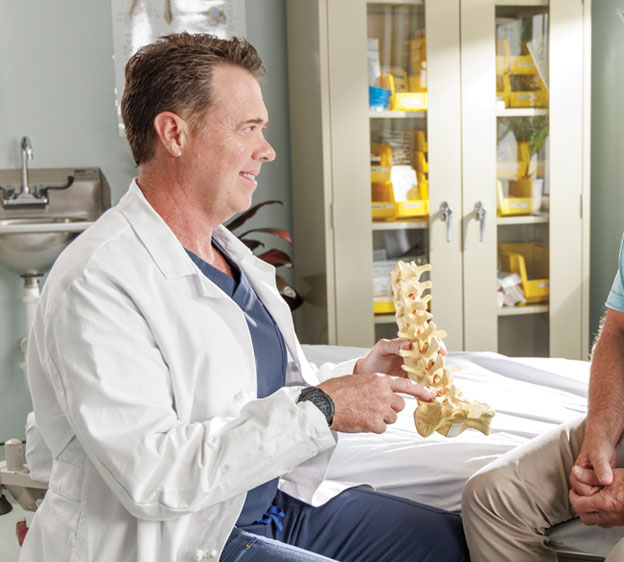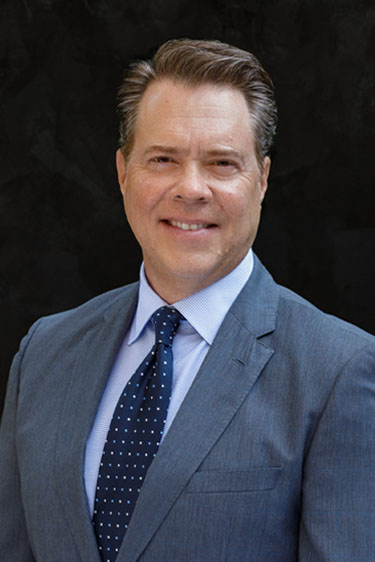Spinal Disc Replacement Helps Lowcountry Man Resume Active Lifestyle
April 21, 2024Categories: Neck Pain

Joseph “Clayton” Prince immediately knew something was wrong when pain started shooting from his neck down his shoulder, through his right arm, and down to his fingertips after he tried to lift an object.
As a garage door service and installation professional for 15 years, Clayton, 46, often needs to lift heavy garage doors and maneuver with his hands overhead. But a slipped disc and a pinched nerve left him unable to lift even 40 pounds without extreme pain. Eventually, the injury sidelined him from work and most other activities for about six months.
“I was stuck on the couch going crazy because I like to move,” he says.
Physical therapy and medication were unable to relieve his pain. Eventually, the pain became so severe he visited the emergency department at Beaufort Memorial and was referred to Dr. Andrew Castro, a board-certified and fellowship-trained spine surgeon on the Beaufort Memorial Advanced Orthopedics & Spine Program team.
Dr. Castro diagnosed Clayton with a slipped or prolapsed disc in his neck and a pinched nerve and presented him with two treatment options — a spinal fusion or a disc replacement.
Read More: Finding Relief for Neck Sprains When Pain Has You Tied Up in Knots
Finding the Right Solution
A spinal fusion involves removing the damaged vertebra and fusing the neighboring vertebrae, helping to relieve nerve pressure and stabilizing the spine. However, the downside of the procedure is that it may reduce spinal mobility or increase the risk of damage to other discs below the fusion, which pick up additional load.
“Every surgery has pluses and minuses,” Dr. Castro says. “We try to get the best fit for the patient.”
Until recently, spinal fusion would have been the only option for Clayton. But Dr. Castro says that over the past several years, artificial disc replacement has become an option for younger patients without much spinal degeneration who want to retain more mobility in their spine.
A New Approach
During an artificial disc replacement, the damaged vertebra is removed. Then, the surgeon inserts a new disc consisting of two roughly nickel-size, plate-shaped discs with a polymer core that acts like a ball bearing.
“Disc replacement allows the original level to move and reduces the risk of the next level breaking down,” Dr. Castro explained.
After discussing these options, Dr. Castro and Clayton decided disc replacement was a better choice.
“I trusted Dr. Castro,” Clayton says. “He told me the pros and cons of both options. I went with the better option for me. If I got a fusion, I would have less movement, and I’m very active, so I had to have as much movement as possible.”
When the roughly two-hour surgery took place in January 2023, it was likely one of the first times the procedure had been done in the Lowcountry. Dr. Castro had become skilled at disc replacement surgery while working as a surgeon in Colorado.
Read More: Cervical Disc Replacement Surgery: Your Questions, Answered
‘Stronger and Stronger’
After the surgery, Clayton was able to go home the same day. Dr. Castro says patients typically wear a soft collar for a few months but can resume most normal activity within a few weeks.
The physical nature of Clayton’s job and the need to regain his strength required some additional recovery time. But he was relieved to return to work about six months after his surgery, helping to ease the financial strain of being on disability for his family.
“Each day, I’m getting stronger and stronger,” says Clayton, who has resumed most of his normal activities. He mostly focuses on servicing garage doors now though he occasionally installs new ones.
“I’m pretty much the same person I was before I got hurt,” he says. “I just have to take it a little easier and not be so gung-ho because my injury was a wake-up call.”
Dealing with persistent back or neck pain? Request an appointment with a spine specialist at Beaufort Memorial.

